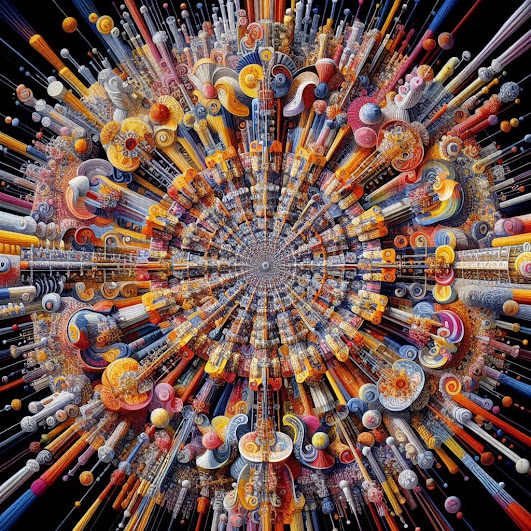Have you ever wondered what metaphorical expressions you can employ to describe a piece of classical music? The metaphors below bring the atmosphere of Concerto For Orchestra by Witold Lutoslawski back to life.
Orchestral Tapestry: Like an intricate tapestry, the concerto weaves together diverse threads of sound, creating a rich and layered musical fabric.
Choreography of Emotions: The music dances through a choreography of emotions, with each section of the orchestra contributing to a captivating and expressive performance.
Sonic Kaleidoscope: Lutosławski's concerto unfolds like a sonic kaleidoscope, presenting a shifting and brilliant array of musical colours and patterns.
Architectural Soundscapes: The composition constructs intricate soundscapes, akin to architectural marvels, where each section of the orchestra is a carefully crafted element in the musical structure.
Emotional Odyssey: The concerto takes listeners on an emotional odyssey, navigating through peaks of intensity, valleys of reflection, and unexpected twists in the musical narrative.
Nature's Symphony: With a touch of the metaphorical, the concerto can be envisioned as nature's own symphony, where the orchestra mimics the ebb and flow of the elements.
Conversing Elements: The different sections of the orchestra engage in a musical conversation, exchanging ideas and motifs like characters in an eloquent dialogue.
Lyrical Canvas: Lutosławski paints a lyrical canvas, each stroke of the orchestra's instruments contributing to a masterpiece of musical artistry.
Time Traveller's Sonata: The concerto acts as a time traveller's sonata, seamlessly bridging musical traditions and pushing the boundaries of contemporary orchestral composition.
Emotional Alchemy: Like an alchemist, Lutosławski transforms musical elements into emotional gold, creating a composition that resonates deeply with listeners.
These metaphorical descriptions aim to evoke a sense of the concerto's artistic richness, emotional depth, and imaginative qualities.
Why don't you listen to the concerto and try to connect the metaphors with the actual moments of orchestral performance.
